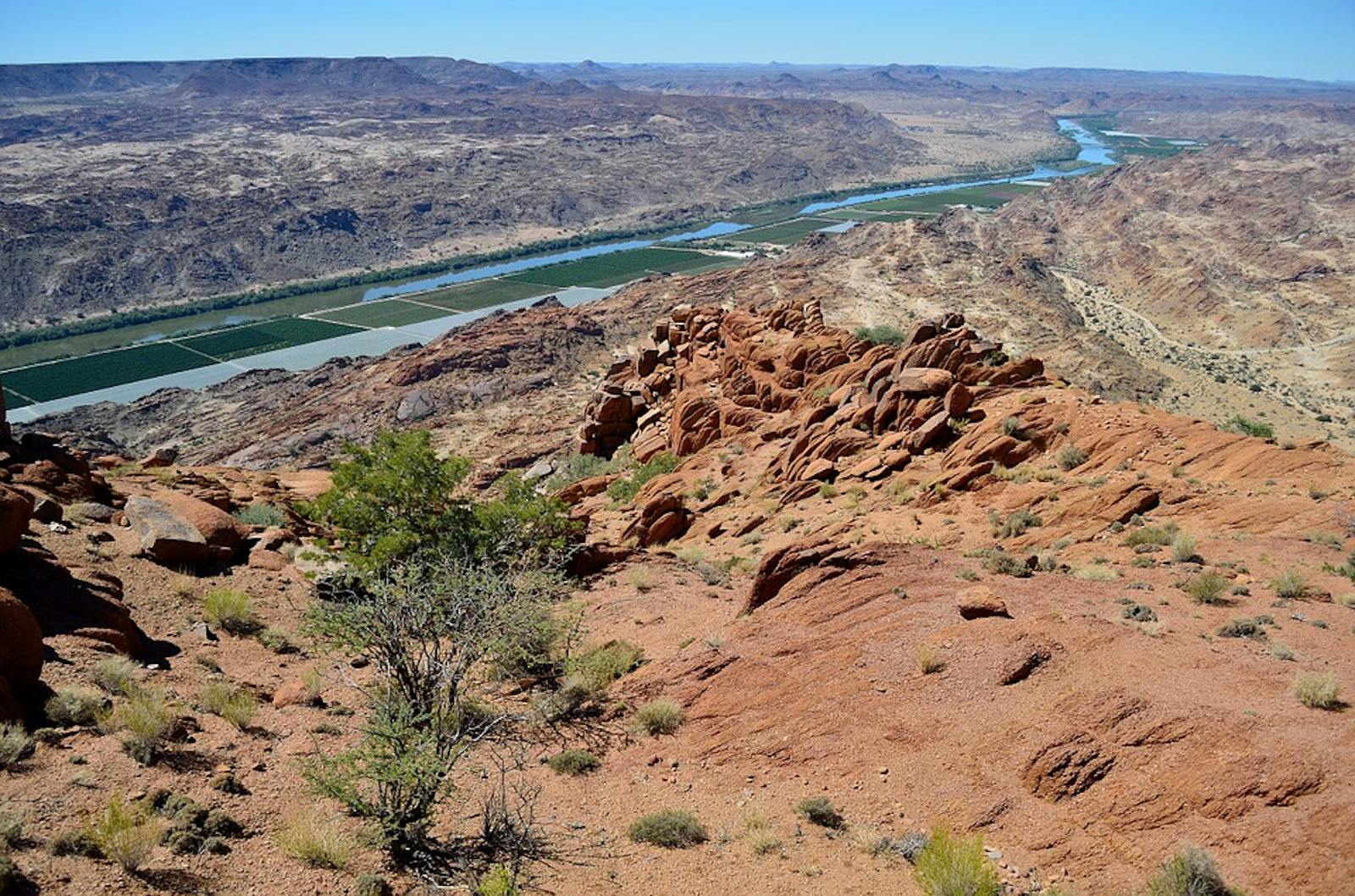Gariep Karoo
The ecoregion’s land area is provided in units of 1,000 hectares. The conservation target is the Global Safety Net (GSN1) area for the given ecoregion. The protection level indicates the percentage of the GSN goal that is currently protected on a scale of 0-10. N/A means data is not available at this time.
Bioregion: Greater Karoo & Kalahari Drylands (AT9)
Realm: Afrotropics
Ecoregion Size (1000 ha):
25,263
Ecoregion ID:
94
Conservation Target:
40%
Protection Level:
1
States: South Africa, Namibia
The Fish River Canyon in southern Namibia is the second largest canyon in the world after the Grand Canyon in Arizona, and the largest in the southern hemisphere. The canyon incised the South African plateau up to 550 m deep and 65 km wide. The Gariep Karoo ecoregion also has a number of pan systems, the largest of which is the Grootvloer-Verneukpan complex. When summer rainfall is high, the system also provides a link between the Orange and Sak river systems, which may enable an interchange of indigenous fish and other aquatic organisms.
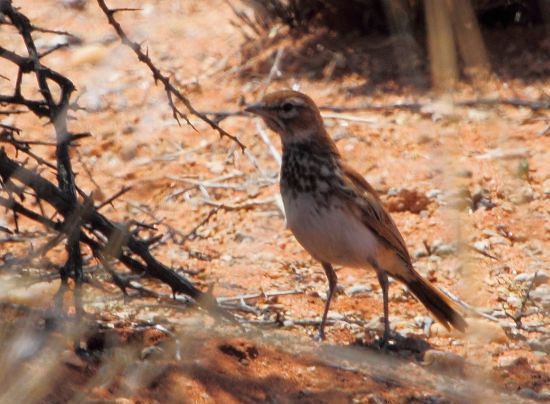
The flagship species of the Gariep Karoo ecoregion is the Ferruginous lark. Image credit: Courtesy of Alan Manson, Flickr
The Gariep Karoo ecoregion is an extensive, open, arid region dominated by low-shrub vegetation, punctuated by rugged relief. The ecoregion extends from the middle of the Northern Cape province of South Africa to the north over the Orange River into Namibia. Droughts are common and both seasonal and daily temperatures fluctuate considerably.
The climate varies locally by the mountainous terrain; the higher reaches experience higher rainfall and lower temperatures. Mean maximum temperatures in mid-summer (January) exceed 36°C, whereas mean minimum mid-winter (July) temperatures are below freezing. Annual rainfall ranges between 50 mm to 500 mm, decreasing from east to west and from north to south. Occasionally, fog influences the western part of the ecoregion.
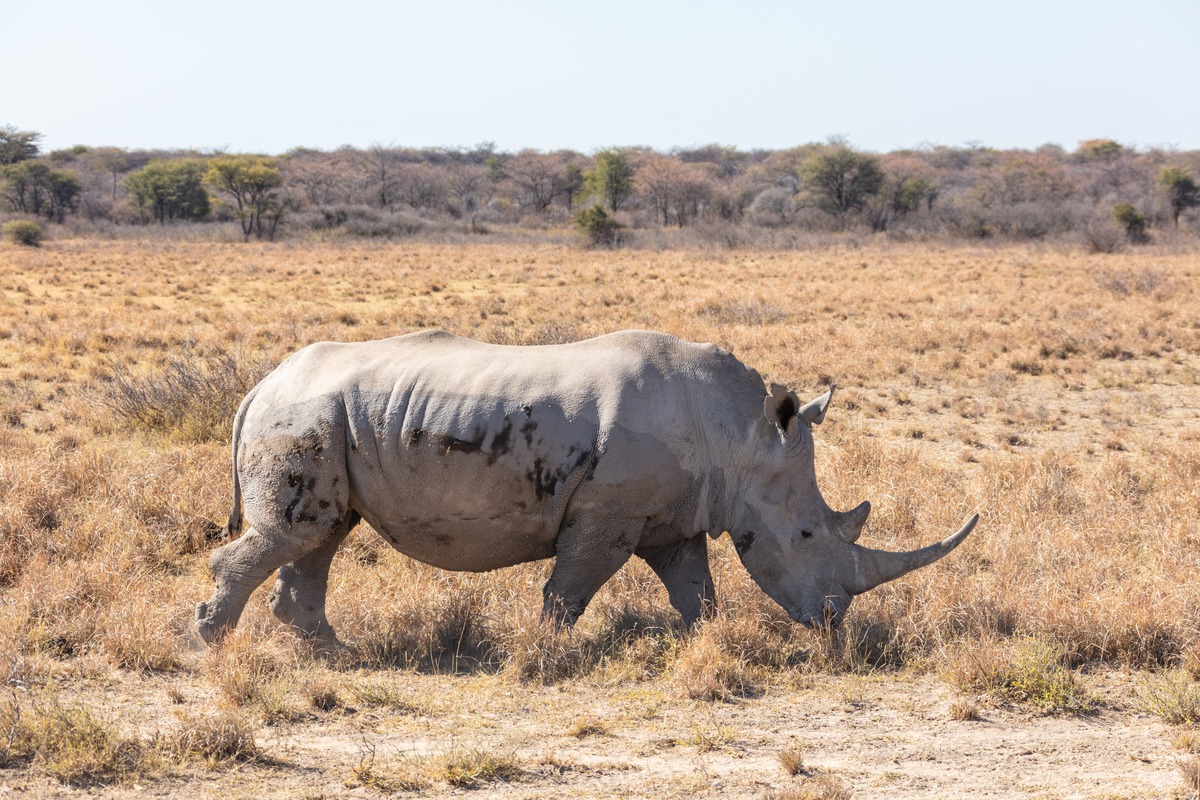
White rhino. Image credit: Diego Delso, Creative Commons
Much of the vegetation is succulent dwarf shrubs and tall stem-succulents including quiver trees. Some of the more abundant shrubs include species of Drosanthemum, Eriocephalus, Galenia, Pentzia, Pteronia, and Ruschia, and the principal perennial grasses are Aristida, Digitaria, Enneapogon and Stipagrostis spp/ Riparian thicket is found near the Orange River and there are also arid adapted trees including Shepherds tree and Ringwood trees.
The fauna of the ecoregion is relatively species-poor and there are few strict endemics. A strictly endemic small mammal includes the Shortridge's rat. Three other small mammals are near-endemic: the riverine rabbit, bushy-tailed hairy-footed gerbil, and Brukkaros pygmy rock mouse. Some fauna are well-adapted to arid conditions, including Hartmann’s mountain zebra and black rhino. Other fauna includes giraffe, klipspringer, honey badger, springbok, red hartebeest, kudu, gemsbok, eland, caracal, leopard, African wildcat, and brown hyena.
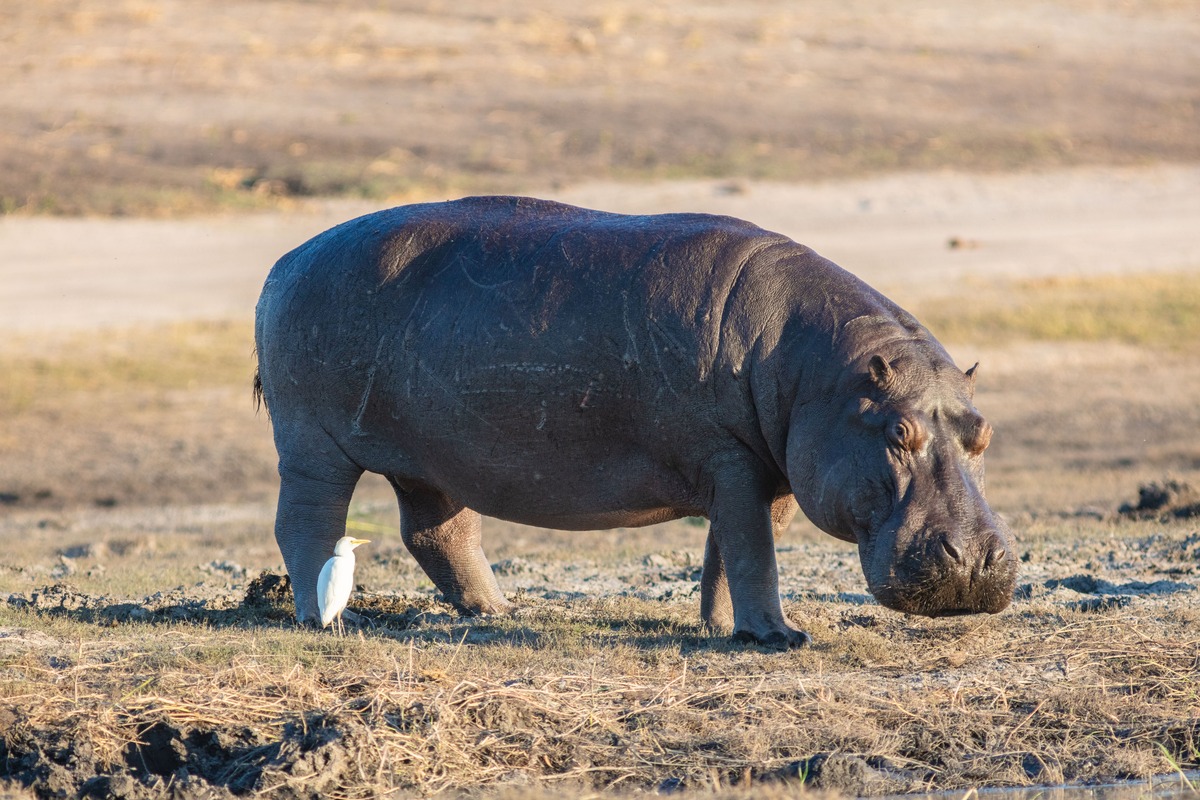
Hippo. Image credit: Diego Delso, Creative Commons
Among birds, the ferruginous lark is strictly endemic, whereas several others are near-endemic: Sclater's lark, Karoo chat, tractrac chat, and the Karoo scrub-robin. Other characteristic bird species are the tawny eagle and martial eagle. The reptile fauna contains at least a number of near-endemics, but only a few are potentially confined to the ecoregion, including Boulenger's padloper and Augrabies flat lizard. Many of the endemics, and some of the other species present, are relicts of past drier epochs when there was a continuous arid corridor along the southeastern and eastern parts of Africa.
The ecoregion was formerly grazed by a variety of indigenous migratory ungulates and now by domestic sheep and goats confined within farm boundaries. This change is thought to be responsible for alterations in both plant species composition and cover.
_male_with_cattle_egret-CC-Charles%20J%20Sharp-2018_resized.jpg)
African buffalo. Image credit: Charles J Sharp, Creative Commons
The establishment of wildlife community conservancies and private reserves have improved the protected status of the ecoregion, especially in Namibia. These include Han Awab, Khob Naub, Huibes, Gamaseb communal conservancy and Gondwana Private Reserve in Namibia. Other protected areas include Hardap Recreation Resort, Naute Recreation Resort National Park, and Ais-Ais Hotsprings National Park in Namibia and Augrabies Falls National Park in South Africa.
Most of the ecoregion is now rangeland for livestock grazing and heavy grazing has left parts seriously degraded, particularly quiver trees. The use of poisoned carcasses by livestock farmers to kill “problem” animals such as black-backed jackal and caracal often results in poisoning of non-target raptors. Some species, like the martial and black eagles, perceived to prey on domestic livestock and poultry, may be intentionally targeted.
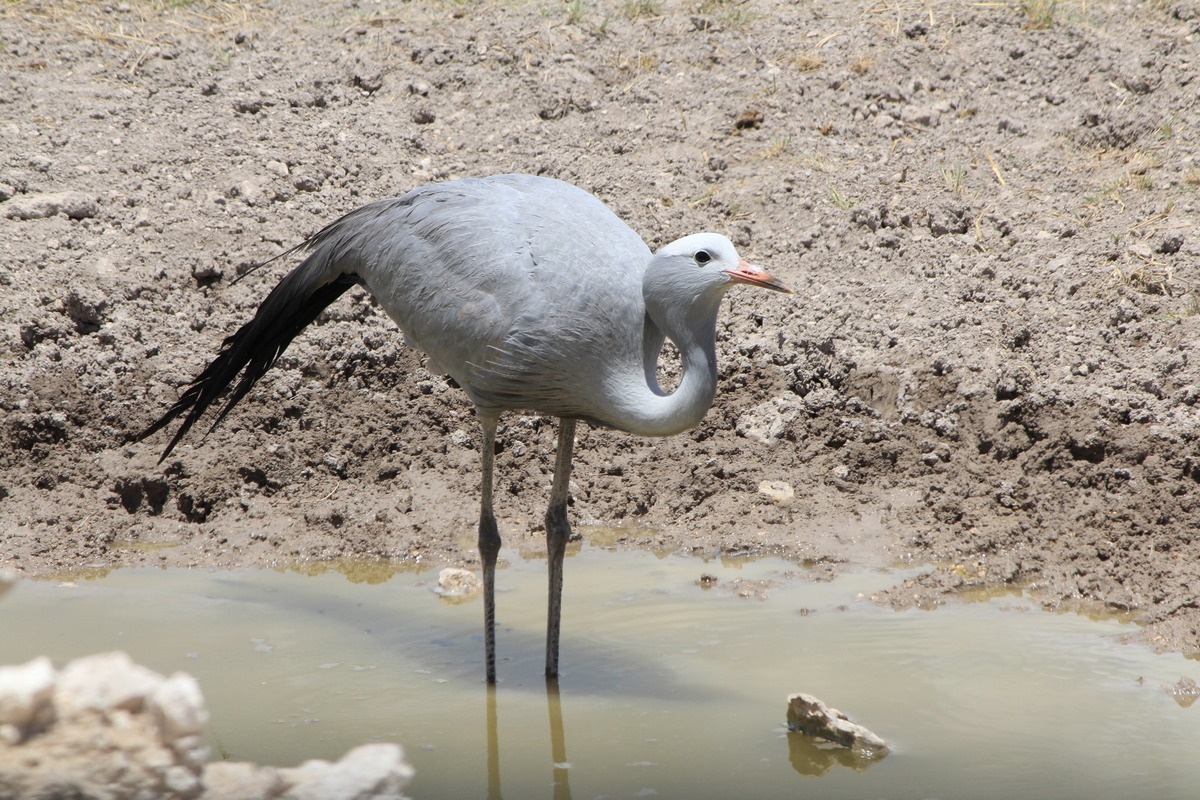
Blue crane. Image credit: Creative Commons
A number of introduced invasive plant species have seriously altered the region’s ecology and hydrology, including mesquite, tobacco tree, velvet mesquite, giant reed, and large thorn apple. These exotics disperse efficiently, lack natural controls, and can outcompete indigenous plants for water, nutrients, and light. Another threat is from mining which occurs along the Orange River and has resulted in soil and water contamination and the loss of critical habitat. Additionally, there have been significant increases in temperature, as well a decrease in rainfall over the past 20–50 years.
The priority conservation actions for the next decade will be to: 1) reintroduce black rhino into their historical range with close monitoring; 2) monitor the infestation of alien species including new invasions and implement an alien species eradication and control plan; and 3) establish further protected areas, particularly in South Africa and establish ‘no-go areas’ within the parks.
Citations
1. Burgess, N., Hales, J.A., Underwood, E., Dinerstein, E., Olson, D., Itoua, I., Schipper, J., Ricketts, T. and Newman, K. 2004. Terrestrial ecoregions of Africa and Madagascar: a conservation assessment. Island Press.
2. South African National Parks. 2013. Augrabies Falls National Park Management Plan (2013-2023). South Africa: Ministry of Water and Environmental Affairs.
3. Burke, A. 2017. New plant distribution records for southern Namibia. Bothalia-African Biodiversity & Conservation. 47(1), pp.1-6.
4. Mvondo, F., Dauteuil, O. and Guillocheau, F. 2011. The Fish River canyon (Southern Namibia): a record of Cenozoic mantle dynamics? Comptes Rendus Geoscience. 343(7), pp.478-485.
